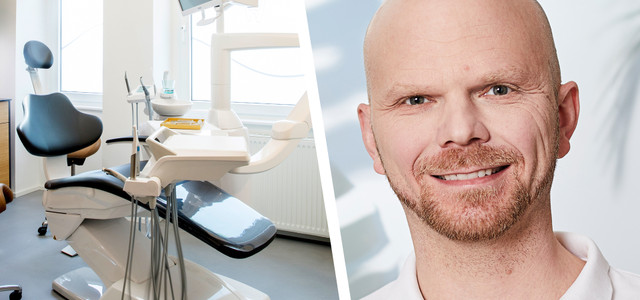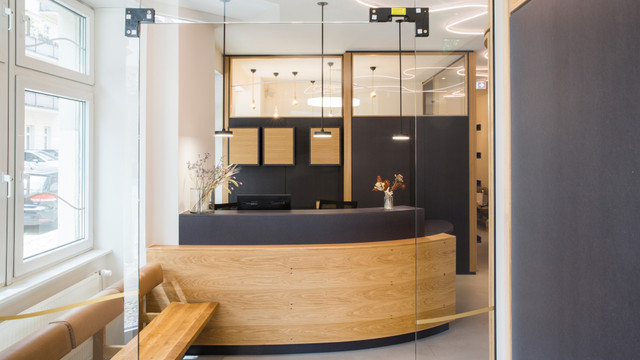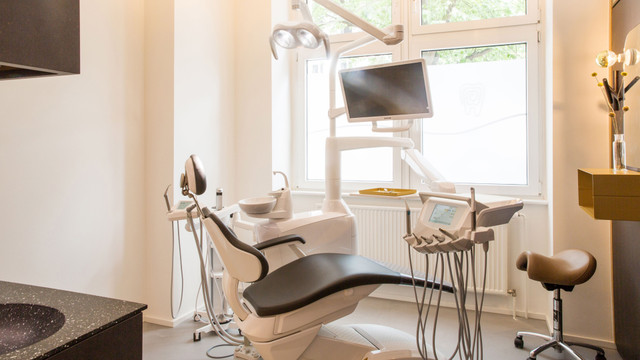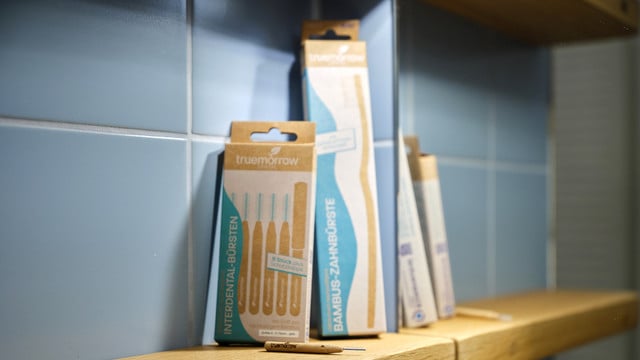
When it comes to your own dental health, the topic of sustainability often takes a back seat. Dentist Hannes Schulte-Ostermann explains that the two do not have to be mutually exclusive and that sustainable methods are often the best for your health.
Environmental awareness in Germany has grown enormously in recent years. But when visiting a dentist, very few people think about how sustainable their treatment methods are. After all, your own health comes first. Nevertheless, more and more dentists are now describing themselves as sustainable or green. One of them is Hannes Schulte-Ostermann, who founded his still young practice “Mundpropaganda” in 2020 in the Berlin district of Prenzlauer Berg and focused on the topic of sustainability from the start.
In an interview with Utopia, the dentist explains why sustainability and health do not have to contradict each other and what measures dental practices can take to protect the environment, but also in which areas there is still a need for action.
Interview with the dentist Hannes Schulte-Ostermann
Utopia: What does sustainability have to do with dentistry?
Hannes Schulte-Ostermann: In my opinion, as a doctor or dentist, you are not only responsible for people’s health, but also for the environment. A healthy person can only thrive if he also has a healthy nature. Some doctors were not so aware of this in the past, but they are today. In this respect, it is obvious that the sustainability aspect is becoming stronger, especially in medicine. In the last three years, since we have been using this sustainability concept, I have observed that many colleagues have “jumped on the bandwagon”. But that is also what we want.
How did you come up with the idea of founding a sustainable dental practice?
I was employed for a long time and faced the situation that I wanted to start my own business. But I saw this ecological footprint that you have as a dental practice. It was clear to me that I would order and use up many resources for the practice. So I thought about what kind of waste and recyclable materials actually accumulate and what I can possibly recycle or save.

What do you do in your practice that is more sustainable than conventional dental practices?
I don’t look at what is not sustainable with other colleagues, even if I can think of many examples such as disposable plastic or the chemicals used in analogue X-rays or the impression materials that are thrown away. I rather focus on: Where in the dental practice do I have the opportunity to make something sustainable? The good thing is that sustainability is often cheaper.
For example, I recently had a phone conversation with a colleague who is closing his practice. He no longer needs all the instruments and simply wanted to throw them away. We now get probes, mirrors and so on from him as gifts. Before he throws it away, we give the things a value again. Of course, this also saves money.
Long-term treatments are worthwhile
Does sustainability also play a role in patient treatment itself?
We do not have any super-extraordinary treatment methods here that are not available elsewhere, but we do place a very large focus on prophylaxis, i.e. prevention and high-quality treatment methods. If I initially treat a patient a bit more expensively, for example with a ceramic inlay, then it lasts 15 or 20 years, maybe even a lifetime. This is much more sustainable than a plastic or amalgam filling, which may only last four to six years – or an amalgam filling, which poses an environmental and health risk due to the mercury content.
Prevention is therefore sustainable and healthy. But what about financially? Is the more sustainable treatment worth it in the long run?
In any case! A plastic filling is comparatively fixed, but also encourages new caries to develop underneath it. If this happens near the nerve, the patient may need root canal treatment and/or even an implant because the tooth will be lost. That quickly costs €2500 and more. But a tooth damage that does not occur in the first place is the most lasting. Each avoided treatment saves resources.

Waste avoidance in focus
Apart from the focus on prevention, what other sustainable measures are there in your practice?
Of course we have the waste avoidance, for example, we do not use plastic cups. We also use digital X-rays without environmentally harmful X-ray developing liquid and much more. We have a manifesto on our website where you can read all about it in detail. Employees also get paid for the ticket for local public transport, a job bike is subsidized and an additional day of vacation if they did not take climate-damaging air travel in the previous year.
Are there certain aspects that are not as sustainable in your practice as you would like?
Yes, for example the gloves. They are made of nitrile plastic and we use quite a lot of them. But one cannot work completely without sterile gloves, especially when performing operations where 100 percent sterility is important. Here we would like the manufacturers of the gloves to develop a sustainable product.
What else do you do to avoid waste in your practice?
In the case of plastics, we are working on structuring the contracts with the manufacturers in such a way that they take back the packaging. We say: Please try to deliver products that have deposit packaging or at least packaging that is easy to recycle. For example, we get our prophy powder in very nice metal bottles that can easily be upcycled into drinking bottles. We often give them away to patients – or they go back to the manufacturer, who then reuses them.
Sustainable tooth brushing tips

Do you have any tips on how to take care of your teeth as sustainably as possible at home?
Doing the whole thing consciously, doing it neatly and thoroughly. With an electric toothbrush, of course, because it simply cleans better. Use interdental brushes, preferably made of natural plastic. You can use it for two to four weeks. Or dental floss, which is also available in sustainable form. We have one that is vegan, plastic free and comes in a jar rather than plastic packaging. There are also beautiful sustainable toothbrush tablets. You should also eat little sweets, and if you do, eat them all at once rather than throughout the day.
You can also find tips for more sustainable dental care here in our article:
Which needs to get better in the future
What needs to happen to make your practice or dentistry in general even more sustainable in the future?
The most important thing would be for suppliers to start adapting. That they produce the packaging more sustainably. In addition, the focus should be more on prophylaxis. Scandinavia is a pioneer in this area, significantly more is being done in the USA, and Germany is still developing in this area.
We recently bought an old fire engine from the 1980s and will convert it into a prophylaxis vehicle to raise awareness of the topic and make it more accessible. We will then also rent out the mobile and make it available to other practices in the country – and we will use it to set up a mobile dental aid project to help in the Ukraine, for example. This may only have something to do indirectly with sustainability, but it is still something we want to help with.
Read more on Techzle.com:
- Changing your toothbrush: How often does it really make sense?
- Bamboo toothbrushes in comparison: Recommended manufacturers
- Microplastics in cosmetics: where it hides and how to avoid it